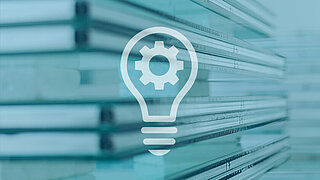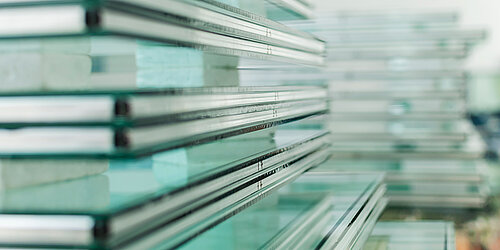Glass production emits significant quantities of greenhouse gases
Glass is one of the most versatile materials of the modern era. It is used in a wide variety of industries and for many different purposes – from an everyday packaging material for beverages and foods to the specialist construction glass used to create spectacular architecture like the skyscrapers in Manhattan. The material is also important for climate protection: glass wool is an insulator that improves the energy performance of buildings, while the glass used in photovoltaic systems helps turning solar energy into electricity.
At the same time, however, glass production currently emits significant quantities of greenhouse gases. In 2015, emissions for the German glass industry totalled 4.9 million t of CO2. Fuel use accounts for around 84 percent of this. The remaining 16 percent, around 791,000 t, are process-related emissions. These emissions are produced by the decomposition of carbonates during melting. These carbonates include sodium carbonate (soda ash), which is used as a fluxing agent.
Surviving the oil crisis as recycling pioneers
The rapid rise of energy prices during the 1970s oil crisis was an incentive for the glass industry to be one of the very first to introduce large-scale recycling: the use of cullet (scraps of broken glass) cuts energy use by around 0.2 to 0.3 percent for each percent of cullet used. Since then, the industry has been continuously working to increase its energy efficiency and improve recycling rates to reduce its climate footprint.
Researching climate-friendly methods for glass production
One challenge for the glass industry lies in replacing fossil fuels with renewable alternatives. Here, it must be clarified whether and in which cases hydrogen or green electricity can be used. Production methods also need to be developed and deployed that can avoid process-related emissions from the raw materials used in glass manufacturing. One aspect of this is research on alternative fluxing agents – the substances that reduce the viscosity of molten glass. The use of cullet also needs to be optimised, and the deployment of CO2 capturing technologies with integrated CO2 use also needs to be investigated.
Improvements to the bigger picture
Political and economic measures will be necessary before the glass industry can implement strategies to reduce its CO2 emissions successfully. One particular issue here is the avoidance of ‘carbon leakage’ effects. The term refers to a practice whereby industry segments move to countries that either have less stringent environmental standards or offer better conditions for glassmaking in general.
Many new technologies need large inputs of electrical energy, which in turn requires the further expansion of renewable energy sources. Last but not least, a market for environmentally friendly glass is a key motivating factor for the industry to cut its CO2 emissions.
Contact
Dr.
Jan Breitfeld
Steel industry, glass industry, economics and regulation
0355 47889-132
Write E-Mail
Examples from practise

DisConMelter
DisConMelter, a satellite project of the SynErgie project, is a glass melting tank that aims to restructure the glass melting process by allowing production to adjust dynamically to the availability of electrical power. The tank consists of three modules: glass is melted in the first module, stored in the second and the third module is used for further processing.
